Streamline workflows to ease the burden on clinicians and improve the patient experience.
The heart of healthcare is at the point of care. Nothing comforts a patient more than a nurse or doctor's friendly, caring face.
The digital transformation in healthcare is no more important than when it helps improve care delivery.
At the point of care (POC), it's about reducing, if not eliminating, points of friction that hinder smooth care delivery. Doing so makes for happier providers, increasing morale and improving productivity. Patients are happier, too – and more likely to give high ratings for their care.
As your healthcare IT (HCIT) partner, Zones can show you what technology makes possible and then help you make it happen.
How Digital Technology and Automation Improve POC Experiences
User identity and access control solutions reduce security risks and password fatigue, allowing providers faster access to applications and helping ensure the safe care of the right patient. Examples include single sign-on (SSO), multifactor authentication (MFA), and positive patient identification (PPID), using ID badges, keycards, proximity readers, and fingerprint biometric readers.
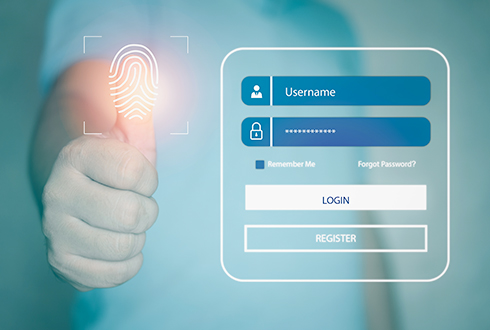

Automatically integrating data from other medical departments and providers into the patient's electronic health record (EHR) in real-time gives clinicians a complete picture of the patient's medical history and health conditions. As a result, they're better able to provide timely and accurate diagnosis and treatment at the point of care.
Equipment ergonomics are important to clinical workflows and caregiver satisfaction. Ergonomics help increase efficiency, productivity, as well as user safetyand comfort. Examples include adjustable-height workstations, contoured keyboards, mice, handheld scanners, and adjustable, high-resolution medical displays and webcams.

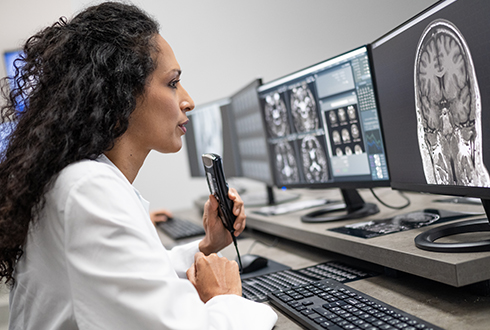
At the POC, clinicians are spending more time documenting patient care within the EHR and less time providing patient care. For example, a 2020 study found that physicians spent an average of 16 minutes and 14 seconds per patient encounter using EHRs.1
Entering patient data into the EHR using speech recognition or voice dictation and transcription software reduces manual and repetitive tasks. It also saves time and allows clinicians to focus on patient care and interpersonal engagement.
Secure mobile devices like smartphones, tablets, laptops, and 2-in-1 devices help streamline clinical workflows and communications at the point of care.
Identity verification at the patient's bedside
Sharing exam results
Smartphone-based point-of-care testing (POCT) and diagnostics
Capturing images and video at the POC for the patient EHR

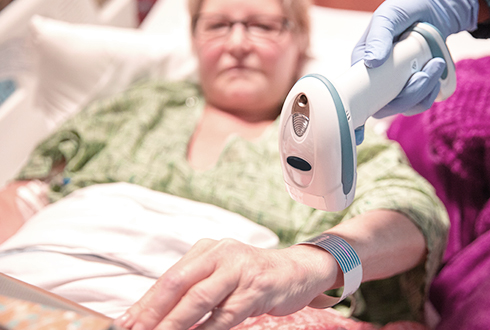
Positive patient ID (PPID) is critical to protect patients from medical errors regarding medication administration, lab work and diagnostic tests, and medical procedures. PPID also ensures that patient information is documented in the correct EHR, which has a direct effect on billing accuracy.
Leveraging artificial intelligence (AI) for point-of-care learning, predictive analytics, clinical decision support, regulatory compliance, and reduced medical errors helps deliver timely, critical information, so physicians can quickly and safely diagnose, treat, and care for patients.

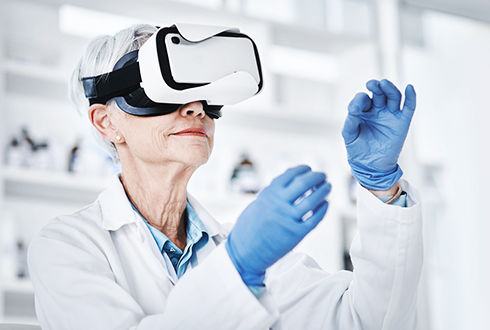
Augmented and virtual reality are used at the POC in a variety of ways, including:
To reduce anxiety during mild to moderately painful procedures2
Physical therapy applications such as virtual rehab for stroke patients3
To treat mental health issues such as PTSD, paranoia, and phobias3
How Zones Helps You Put POC Solutions into Action
As your healthcare IT (HCIT) partner, we can:
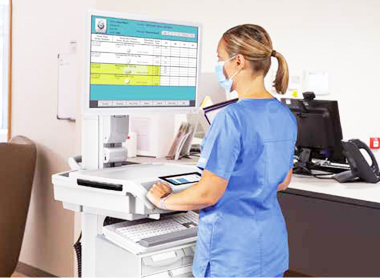
Guide you through your options for POC digital transformation and help ensure you invest wisely for today and the future.
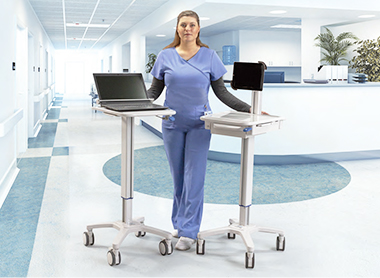
Procure the necessary corporate- and medical-grade hardware, software, and services you need to run as efficiently and cost-effectively as possible.
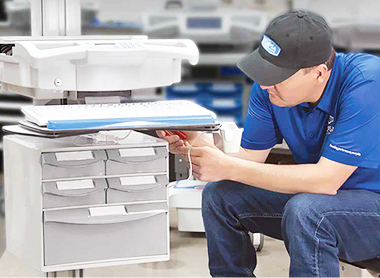
Manage deployment and installation.
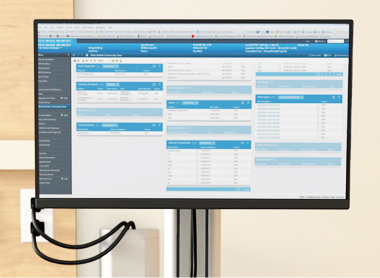
Ensure secure, high-speed network connectivity and interoperability with your EHR

Track, maintain, and troubleshoot your POC solutions with complete IT lifecycle and managed support services.

To help expedite onsite deployment and use, Zones technicians can pre-stage, pre-assemble, and pre-configure your systems, including imaging and asset tagging of electronic devices like Apple iPhones, iPads, and MacBooks, from one of our regional Technology Solution Centers.
FEATURED PARTNERS















Extend your digital transformation to the point of care.
Sources:
1. J. Marc Overhage, MD, Ph.D., David McCallie Jr., MD, "Physician Time Spent Using the Electronic Health Record During Outpatient Encounters." Annals of Internal Medicine®, February 4, 2020 (accessed Sept. 16, 2022).
2. "Lenovo breakthrough in Virtual Reality gives hope to Indians suffering from mild to moderate pain." Healthcare Radius, Dec. 20, 2019 (accessed Sept. 16, 2022)
3. "The health VR trends to track in 2022." Health Tech World, Dec. 28, 2021 (accessed Sept. 16, 2022).
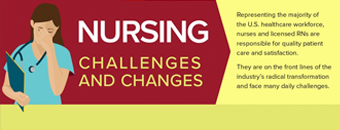
INFOGRAPHIC
Nursing challenges and changes
Representing the majority of U.S. healthcare workers, nurses are licensed RNs are responsible for quality patient care and satisfaction. They are the frontline of the industry's radical...


 Healthcare Solutions
Healthcare Solutions